In continuation of our series on Temples of India, this article is dedicated to some of the famous temples of North India. In terms of structure and design, these temples differ than the South Indian temples. The architectural style of the temples mainly classifies them as temples of South India (Dravidian architecture) and temples of North India (Nagara architecture). There might be a few that has features of both the styles. The temples in North India having Nagara architecture constitutes of all the temples in the north, east, west and central part of India.
Majority of the temples of North India also has a typical architectural style characterized by a distinct Shikhara (spire or tower) above the garbhagriha (the small sanctuary or room housing the main deity) and a mandapa or pillared hall in front of the garbhagriha.
READ MORE ABOUT THE SOME OF THE FAMOUS TEMPLES IN INDIA
Temples in India are a part of the cultural fabric of the land and its people. And some of these temples boast of beautiful architecture and design. You will find some interesting stories behind all the temples. It could be useful to learn some Hindi in advance before you visit India.So here is a list of temples in North India that you must take a visit to while you are in India. These temples have been suggested by travel bloggers all around the globe.
Temples in North India
-
Krishna temple in Naggar

Krishna temple in Naggar is one of those places where you feel that time hasn’t passed at all. When you arrive at the temple after hiking through the Deodar forest on a stone-path made specifically for the temple, Krishna temple seems to suddenly appear out of nowhere.
Made in the 12th century, this stone temple is said to be from the late Gupta period. The high shikhara of the temple resembles the architecture style of the other temples in Naggar some of whose origins are yet unknown. The intricate carvings and motifs of gods, dancers, and animals on the temple walls must be observed closely.
You can see the idols of Lord Krishna, Radha, and Garuda amongst many others in the temple.
The most special time to visit Krishna temple is during the Dussehra when the idol of Shree Krishna is taken out for a procession on the wooden chariot kept inside the temple grounds.
You don’t have to follow any particular dress code inside the temple but make sure that you don’t wear very short clothes as the temple priest and the locals might not like that.
Also, many places on the internet mention that non-Hindus aren’t allowed inside the temple but nobody asked me if I was a Hindu when I went inside, and I could freely roam around the temple.
Contributed by Priyanka from On My Canvas
-
Garh Ganesh Temple, Jaipur

Garh Ganesh Temple is one of the oldest temples in Jaipur. It was built before the city was founded by the first ruler of Jaipur – Maharaja Sawai Jai Singh I.. There is no documentary proof as to when the temple was built. However, it is safe to assume that it was built before 1727 AD.
The temple played an important role in the last Ashwamegh Yagya of the world performed by Maharaja Sawai Jai Singh I. The temple is built on a strategic location overlooking the city. The unique aspect of the temple is that it is built like a small fortress, unlike other Hindu temples with a dominating spire.
The temple can be visited by visitors between 6.30 AM to 12.00 PM and 4.00 PM to 9 PM in Summer. During Winters the timings are 7.30 AM to 12 PM and 4.00 PM to 8.30 PM.
A good time to visit is during the Ganesh Chaturthi. Photography is prohibited in the temple. Visiting Garh Ganesh Temple involves an arduous climb through the stairs. One can choose a longer path but with an easy flight of steps. Like other Hindu temples, one should dress conservatively; no short dresses and shorts. Before entering the temple one needs to remove the footwear. The best way to reach the temple is via a tuk-tuk or taxi. UBER and Ola taxi services can be used to reach the base of the temple. Another thing one can add along with a visit to Garh Ganesh Temple is Royal Gaitore, located at the base of the temple.
Contributed by Arv from JaipurThruMyLens
-
Khatu Shyam Temple, Sikar, Rajasthan
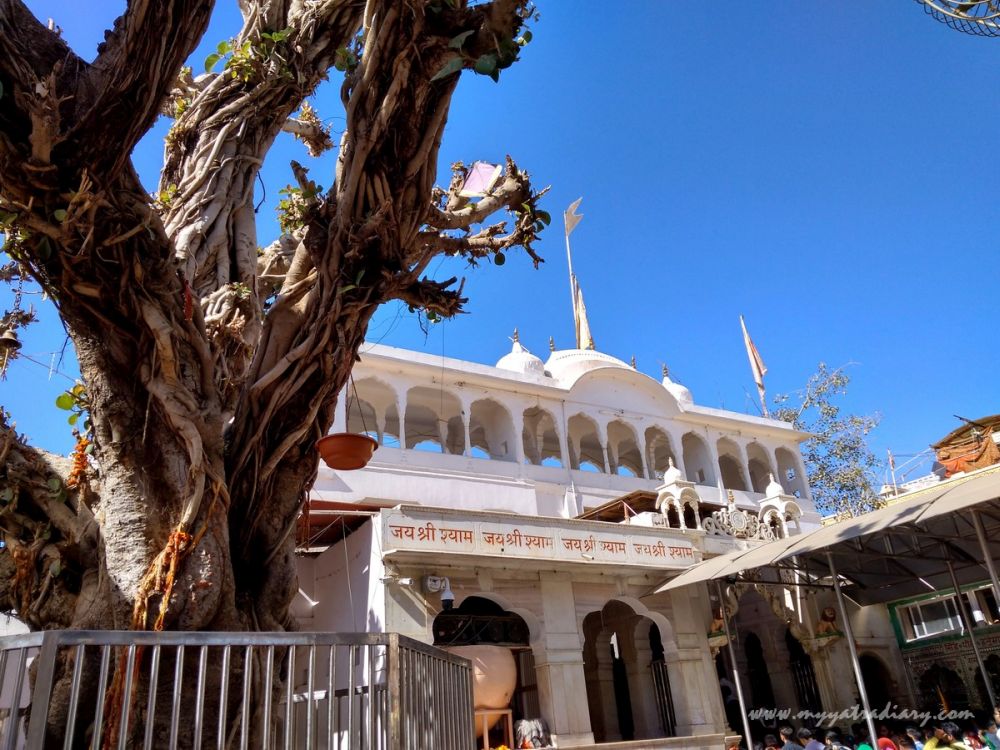
You may be aware of temples dedicated to the many Gods and Goddesses in the Hindu Pantheon but do you know there is a unique temple dedicated to an epic character hero from the Mahabharata in Rajasthan that is totally unique and definitely worth a visit?
Built originally in 1027 AD by Roopsingh Chauhan and later renovated in 1720 AD by a nobleman known as Diwan Abhaisingh at the behest of the then ruler of Marwar, Khatu Shyamji Temple in the Sikar district stands as a stark reminder of the sacrificial valour displayed by Barbarik, the grandson of Bhima.
As per the story, Lord Krishna, in the guise of a Brahmin, once asked for the head of Barbarik as he did not want this brave boy’s support to strengthen the team of the Kauravas (injustice). Barbarik happily obliged and Lord Krishna, pleased with his sacrifice, blessed him by placing his head on a hillock, to be worshipped in the Kaliyuga.
The present-day temple houses the miraculously rediscovered head of the hero today worshipped as Khatu Syam Baba, the granter of all wishes.
The highly revered temple is open 24 hours a day on every Shukla Paksha Ekadasi, i.e., on the 11th day of the bright half of every month in the Hindu calendar. The temple is also open throughout the 4-day Phalgun Mela, the annual fair held in the months of Phalgun and Kartik (March) which is very popular with the believers.
Khatu Shyam temple is located about 80 km from Jaipur on the way to Sikar. Best way to reach the temple is to take the route via Ringus.
Contributed by Arti from My Yatra Diary
-
Chand Baori

Chand Baori is a beautiful stepwell and the much more attractive destination than the nearby Harshad Mata Temple near Jaipur, India. Chand Baori was built by King Chanda sometime in the 9th century and was regularly used to provide water throughout the year in this Rajasthani desert. It is one of the oldest and largest stepwells in the world and rarely visited because its tough to find and off the tourist path, requiring a day trip from Jaipur.
There are bus tours that come to Chand Baori from Jaipur; they can easily be booked at any travel agent or hotel in the area. Many people stop in Abhaneri on the way from Agra to Jaipur and I highly recommend this if you have the chance. Rather than taking a tour, I rented a motorcycle and used Google Maps to about 100km east to Abhaneri where the temple is located. Driving a motorcycle on India roads and immersing myself with the local culture was part of the fun in visiting this destination but be prepared for an adventure with potholes and traffic on this journey.
It cost about 150 INR for a local guide and you should be dressed modestly in the whole area. Follow standard temple etiquette and don’t wear revealing clothing.
The architectural style of Chand Baori (sometimes called Chand Bawri) follows the iconic stepwells that you’ll find throughout India. These were practical structures that locals needed in order to have water throughout the dry season. Today they are ancient marvels and well worth you visit as you explore the temples of India.
Contributed by Mike from LiveTravelTeach
-
Sun Temple, Gwalior

As the name suggests, the Sun Temple or Surya Mandir is the temple dedicated to Sun God. Apart from the most famous versions in Konark, Odisha or in Modhera, Gujarat, the newest of them all is the Sun Temple in Gwalior, Madhya Pradesh.
A mesmerizing red sandstone temple built as a perfect replica of the Konark temple is built in the shape of a horse chariot of the Sun God with 7 horses drawing the chariot.
Spread over a sprawling area of 20,500 square feet, the temple is built in the middle on an elevated platform surrounded by beautiful trees and flowers.
There are 24 wheels of the chariot, 12 on each side. Each wheel has 16 spokes, 8 thick and 8 thin spokes. Every detail of architecture has a significance like 7 horses represent 7 days of the week. The temple walls adorn intricately carved 373 idols of various gods, including all ten incarnations of Lord Vishnu.
Built by G.D. Birla in 1988, this is one of the many philanthropic works undertaken by the Birla family. Hence this is even called the Birla Sun Temple. There are statues of Sri and Smt. Birla in the premises paying homage to the Sun God.
The entry to the temple is free and is open from sunrise to sunset (around 6:30 a.m. – 6 p.m.) except the lunchtime (12 p.m. – 1 p.m.)
The best time to visit is early morning or evening and attend the divine aarti.
Gwalior is well connected by train and air. It is convenient to get a cab from the station or the airport to reach the temple.
Contributed by Anjali and Neha from Travel Melodies
-
Birla Temple, Jaipur

Birla Temple, also known as Birla Mandir, was built by the Birla family along with 16 other Birla Temples located throughout India. We visited the Birla Temple in Jaipur, it is magnificently built and was constructed of pure white marble in 1988. The three domes in the complex symbolise the three major religions that are followed in India while symbolising the three originating religions, it does remains a Hindu temple and visited by thousands of pilgrims. The temple is devoted to Lord Vishnu and Goddess Lakshmi and is often referred to as Lakshmi Narayan Mandir.
The temple is free to enter and it open between 8 AM -12 PM then again from 4 PM -8 PM avoiding the heat of the day. The surrounding gardens are perfectly manicured with flowers and hedges and a joy to stroll around. Built at the base of Moti Dungari Hill in Jaipur it is a very popular tourist attraction, with parking on-site travelling be vehicle would be the best way to get to Birla Temple.
Inside the temple has the most detailed religious engravings around the walls, these are easily appreciated by those of every religious denomination. You will be required to remove your shoes when entering the temple, there is a designated area to leave your shoes. It is refreshingly cool to walk along the white marble floors, especially after a hot and humid Indian summer day. Avoid visiting during the Indian festival of Diwali, thousands of devotees will visit the temple on this auspicious day.
Contributed by Sally from Our3KidsVtheWorld
-
Sri Siddhivanayak, Mumbai

Sri Siddhivinayak temple is one of the best loved temples in Mumbai and we recommend a visit here during your visit to Mumbai. Dedicated to the powerful and venerated Hindu God, Lord Ganesh (who governs prosperity, learning and health). For extra wow factor, visit this temple during the Ganesh Chaturthi festival which takes place in September each year according to the lunar calendar (but be prepared for crowds if you come at this time). Despite the large number of visitors, you will still be able to find many hotels in Mumbai that offer a comfortable stay.
The Temple is reportedly one of the richest in India – it’s visited and supported by Bollywood stars as much as by ordinary Mumbaikers.
The temple was originally built by Laxman Vithu and Deubai Patil in November 1801. There’s also a small Hanuman shrine within the complex that was built in the 1950s after a Hanuman icon was found during an extension project.
Contributed by Ellie & Ravi from Soul Travel Blog
-
Kalighat Temple, Kolkata
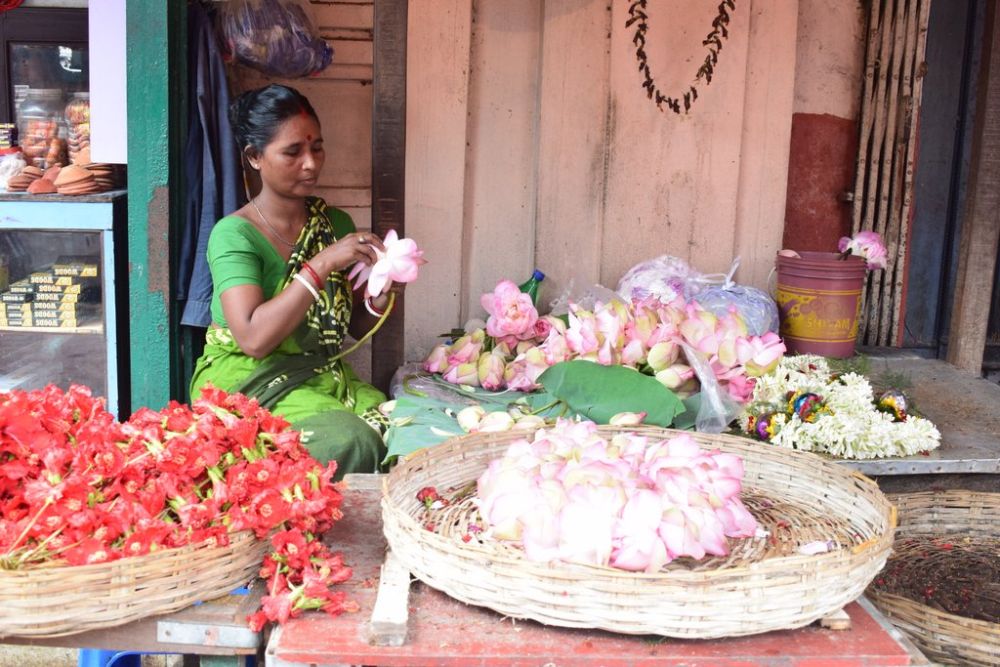
It is just not a temple, it is the identity of the city Kolkata. It took me a long time to appreciate Kalighat for what it is, beyond its intense religious and mythological value. Kalighat is deeply ingrained in the daily life of Kolkatans. The Trinoyon, three eyes vibrantly marked with vermilion on the black stone that Kali deity is at Kalighat, is omnipresent in the city, from the rear mirror glass of an auto-rickshaw to the entrance of a doctor’s chamber. Kali defines Kolkata and the Bengal beyond.
One of the Shaktipeeths of Debi, the feminine energy worshipped by the Hindus, Kalighat dates back to antiquity, long before the East India Company came to India, collected three villages and established Calcutta, the London of the East. It was built by the Bhuiyan kings of now Bangladesh, erstwhile East Bengal. The Bhawal Jamindars built a Radha Krishna temple in the complex as well. The original temple was built by the river Buri Ganga, Buri denoting age. However, the river flow has narrowed down subsequently. Written accounts testify to history how people have commuted over Buri Ganga, dodging dacoits en route to make the pilgrimage.
Legends say the mound on which the shape of Kali is derived, is known to locals as Bramhar Dhipi, Bramha being one of the Hindu Trinity. Gold studded four hands and a long protruding tongue of Kali is further planted on the original mound, whose existence dates back to antiquity if we go by folklore. The kali of Kalighat is also known as Dakshina Kali.
Since this is a Shakti Peeth, animal sacrifice is a norm at Kalighat. You might find a lot of goats tied by the entrance who will later be sacrificed, the meat is cooked and distributed among the devotees. To offer a Puja at Kalighat, you are required to go with a Panda, who will approach you indiscriminately. Ingredients to offer puja are available at the entry gate. Nearest metro station to Kalighat temple is at Kalighat Metro. Modest clothing is expected at the temple premises. Nonetheless, Kalighat receives millions of footfall on occasion of Durgapuja, Kalipuja and other auspicious days.
Kalighat Pata Chitra is world-famous for its human appeal. On the side of Kalighat, one of the oldest red-light areas of the country is located.
Madhurima from Orange Wayfarer
-
Jain temples of Jaisalmer

The Jain temples on Jaisalmer may not be as grand as some of the famous Jain temples of India. But they are exquisite, like jewellery crafted from gold. More importantly, they tell absolutely fascinating stories of the power of wealth, religion, and military. The dynamics of the three great powers hung in a delicate balance for centuries until India’s partition that blocked the Silk trade routes that came via Pakistan.
In the olden days when business flourished in Jaisalmer, Jain merchants needed a protected site for their temples as the Muslims waged war against other religions. The wealthy Jains struck a deal with the king so that his military might would protect the temples. As part of the epic agreement, merchants funded the impenetrable fort that protected the palace, priests and the temples.
Today, the temples host hundreds of important statues of Jain Tirthankaras and saints. More importantly, the temples host a treasure trove of ancient Jain scriptures and literature which is only open to scholars.
When you’re visiting the temple, remember there are separate hours for Jain worshipers and tourists. If you are a Jain, I would recommend you visit early in the morning, for quiet meditation and to soak in the temple’s beauty in the stillness of the morning.
There is a separate ticket for cameras that can be purchased by one of the temples.
The best time to visit these temples is in winter because Jaisalmer is unbearably hot in summer.
Contributed by Jyoti from Story at Every Corner
-
Tripura Sundari Temple, Tripura
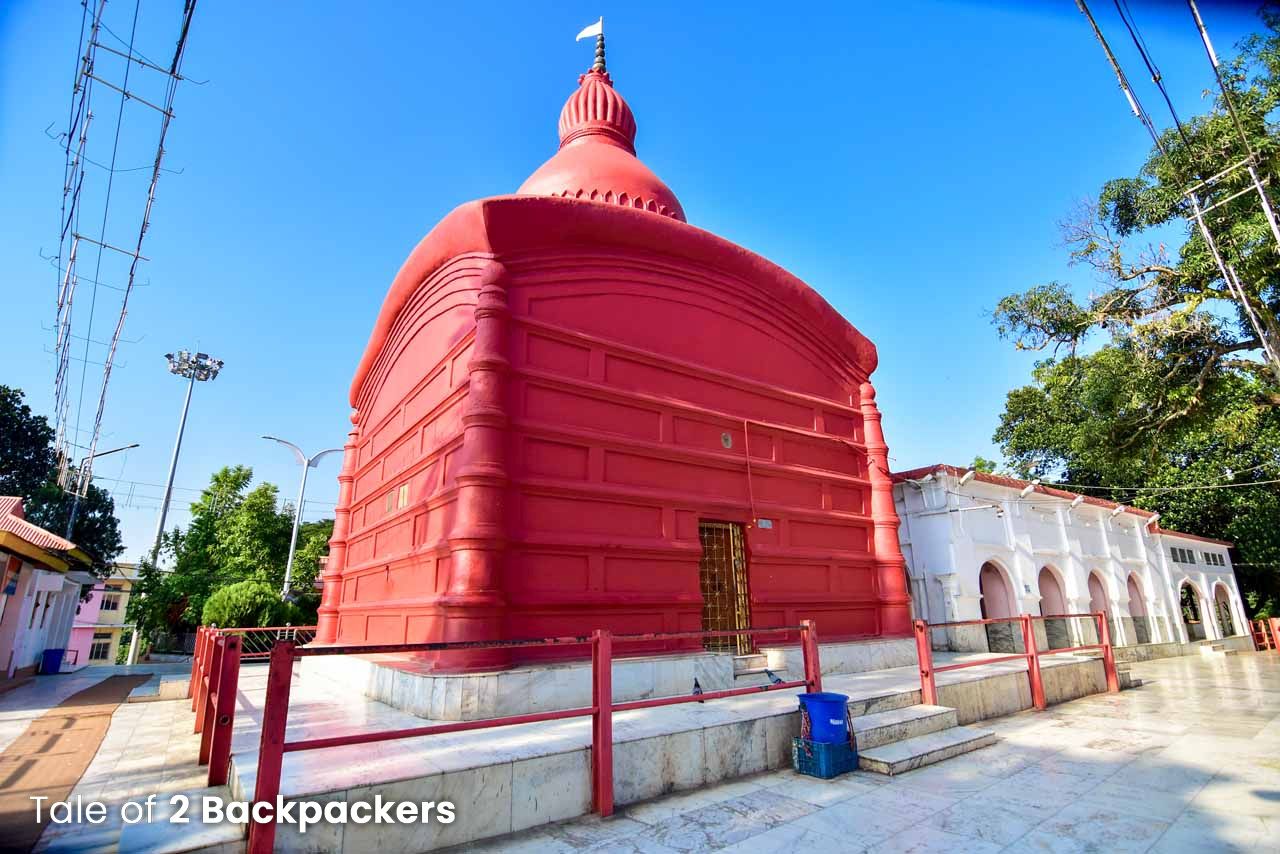
Tripura Sundari Temple, or Matabari, as it is fondly known in the area is located in Udaipur in Tripura. The temple is dedicated to Goddess Kali and is worshipped in the form of “Shoroshi” or a sixteen-year-old girl.
The temple was built by King Dhanya Manikya in 1501 AD and was later repaired by King Rama Manikya. Today the red coloured temple standing atop a small hillock is one of the most revered temples in northeast India. The architecture of the temple is very simple having a square sanctum and a conical dome. On the eastern side of the temple is the Kalyan Sagar Lake, a huge water body that is like an oasis in the middle of the city.
If you are visiting the Tripura Sundari Temple, do not forget to have the pedas (a sweet made from milk). It is said that the pedas are one of the best in India.
To reach the temple, you have to first arrive at Agartala, the capital city of Tripura about 50 km from Udaipur. Agartala is well connected by airways and railways from all the major cities of India. From Agartala, you can take a train, bus or hire a car to Udaipur where the temple is located.
Contributed by Amrita from Experience Northeast India
-
Manikaran Temple

On my solo travel to India, I visited a famous Hindu and Sikh pilgrimage temple called Manikaram temple nestled in the Himalayas in Kullu Himachal Pradesh. Word has it that when the Hindu God Shiva and his consort Parvati were walking in the valley, Parvati dropped one of her earrings. The jewel was seized by Shesha who then disappeared into the earth with it. To this day, jewels continue to be submerged in the waters in the Manikaram temple and it is also known for its healing energy.
There are even Hindu deities Rama, Krishna, and Vishnu in the temple area. Hot flowing water is considered to be extremely auspicious as it can transform all negative energy into positive energy. When I stepped foot into the temple grounds, it was unbelievably scenic to watch the flapping prayer flags and steam billowing from the waters. Hot chapattis are even cooked here and at the corner of the temple, there’s a steam plunge pool.
It is no wonder that Lord Shiva and Goddess Parvati was enamoured by the beauty of the place that they decided to spend eleven hundred years here.
Contributed by Pashmina from The Gone Goat
These are only a few of the famous temples in North India and other parts of the country. There are many others. Let us know about your favourite temple in comments below.
Pin this for a later read.



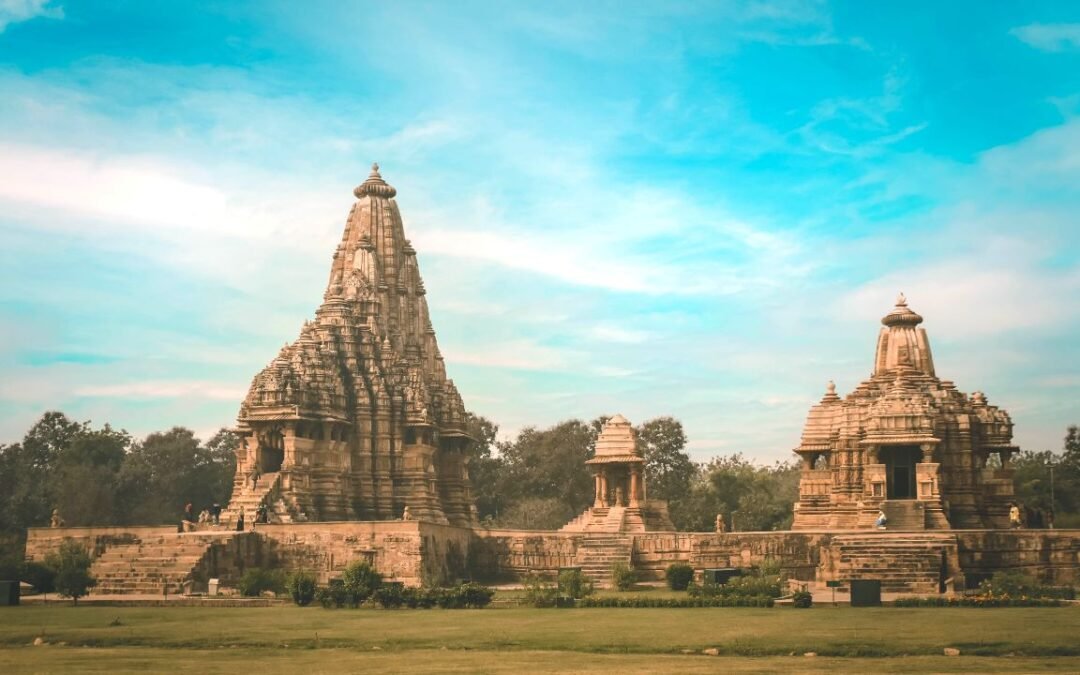




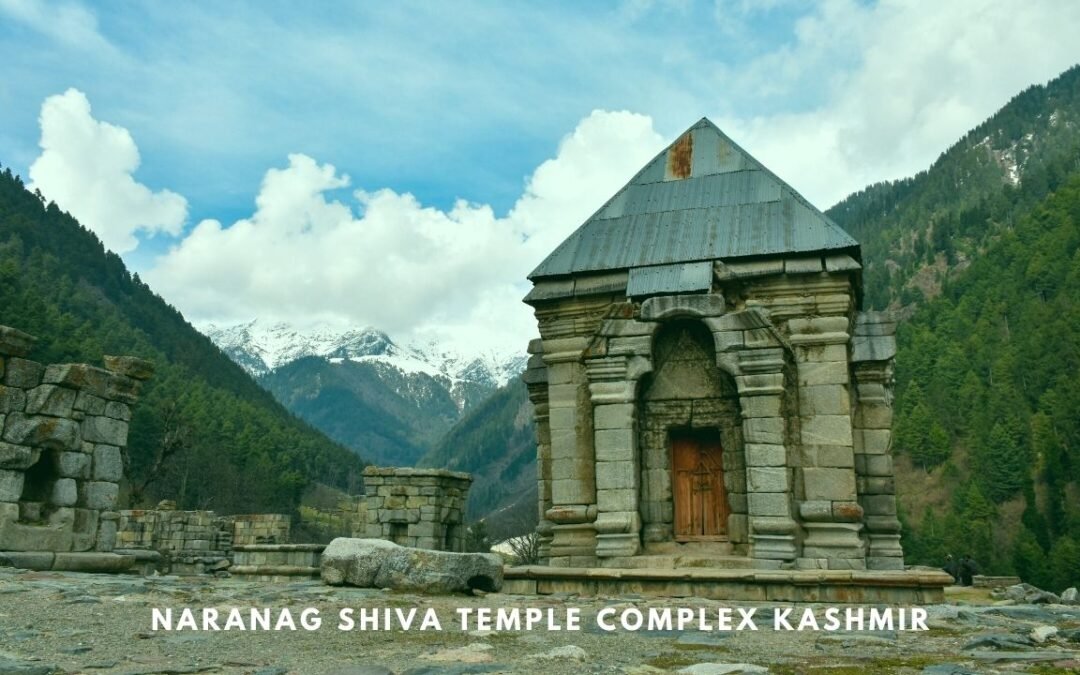

0 Comments